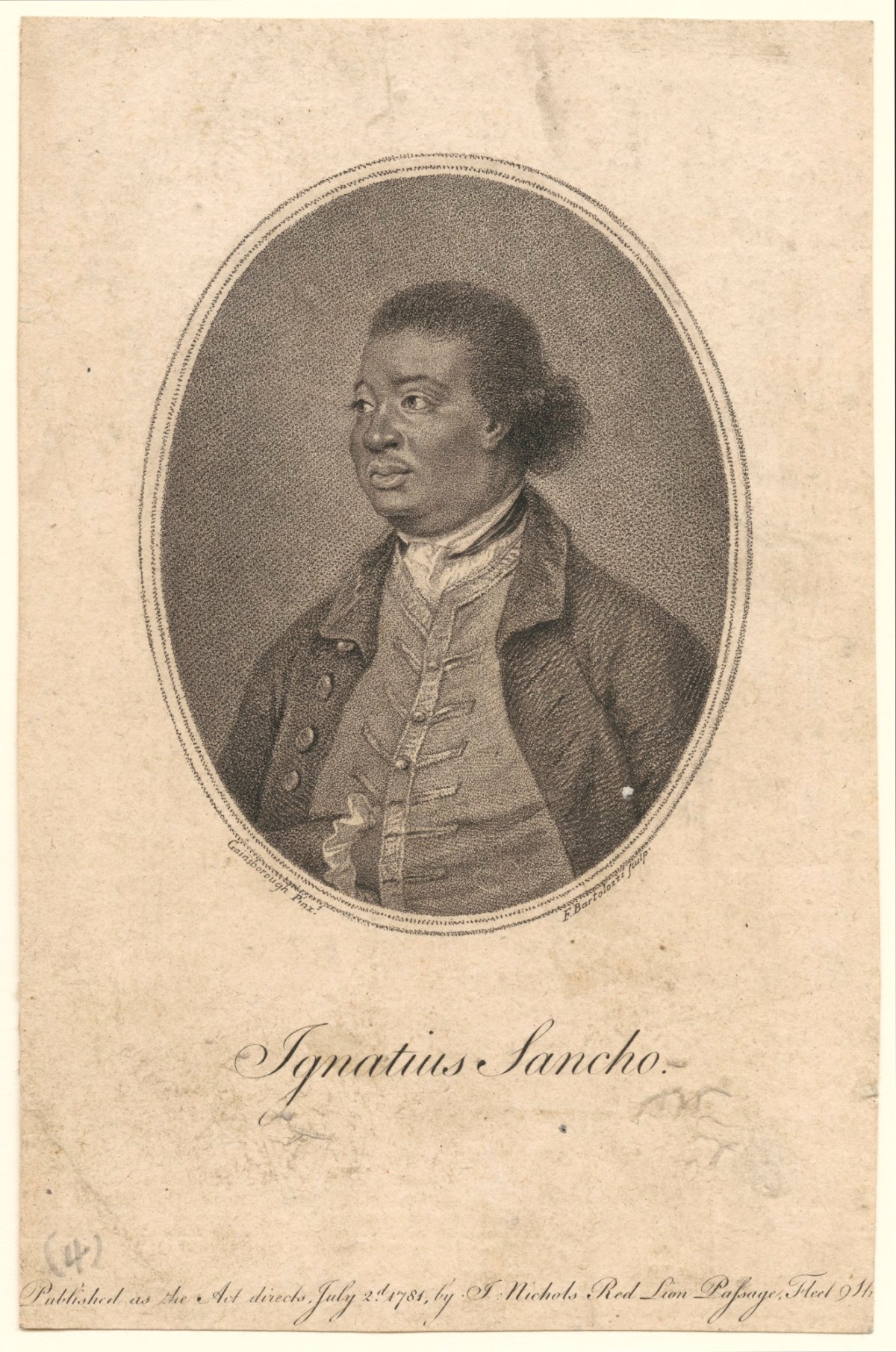
Francesco Bartolozzi RA, Ignatius Sancho, 1781.
Stipple engraving. 91 mm x 71 mm. © Photo: Royal Academy of Arts, London.
This image is released under Creative Commons CC-BY-NC-ND
To licence this image for commercial purposes, contact our Picture Library at picturelibrary@royalacademy.org.uk
Ignatius Sancho, 1781
Francesco Bartolozzi RA (1727 - 1815)
RA Collection: Art
This engraving depicts Ignatius Sancho (c.1729-1779), a musician and man of letters. Sancho was born into slavery but overcame the oppressive systems of Georgian Britain to become a much-respected member of artistic and aristocratic circles in London society.
This image was the frontispiece for the volume of his correspondence that was published a few years after his death, Letters of the late Ignatius Sancho, an African (1782). The volume was published by his friend and correspondent Frances, Lady Crewe, a prominent political hostess of the era, to demonstrate that ‘an untutored African may possess abilities equal to an European’. The volume was sold by subscription to over 1200 people and the breadth of subscribers is testament to Sancho’s wide-ranging social interactions and the respect he commanded among his contemporaries.
Ignatius Sancho was born around 1729 on board a ship transporting enslaved people from Guinea in Africa to the West Indies. Soon after landing on the Spanish colony of New Granada, Sancho’s mother died of disease and his father subsequently committed suicide, choosing death over a life in slavery. At the age of two, the orphaned Sancho was taken to London by his enslaver and given to three sisters living in Greenwich (possibly Elizabeth, Susanna and Barbara Legge), who gave him the name ‘Sancho’ after the character in the novel Don Quixote. A chance encounter with John, 2nd Duke of Montagu, who lived nearby led to a long friendship between the young Sancho and the Duke. The latter was impressed by Sancho’s intelligence and encouraged his education through reading, giving him access to the extensive Montagu library in his Blackheath home.
Sancho remained enslaved by the three sisters in Greenwich until he was 20; then in 1749, the Duke died and Sancho fled Greenwich in fear of remaining in slavery for life. He was taken into the household of the late Duke’s widow and took on the position of butler, an important and well-regarded role in an aristocratic household. On the Duchess’ death in 1751, Sancho was granted an annuity of £30 which supported him until he entered the service of the late Duke’s son-in-law, George, 1st Duke of Montagu of the new creation. He was the Duke’s valet from 1766-1774, and during this time was introduced to prominent individuals across Georgian society through the Duke’s royal appointments as Constable and Governor of Windsor Castle.
Throughout these years in the Duke’s household and as part of the social and artistic sphere,Ignatius Sancho cultivated a deep love and knowledge of the arts and published several musical compositions. It was also in this position as valet to the Duke that the painting on which this engraving is based was produced, in 1768. It was likely commissioned from Gainsborough by the Duke and Duchess as a gift for Sancho, and according to popular legend the portrait was painted in just one hour and 40 minutes. Sancho's fine clothes and composed expression indicate the high esteem in which he was held by painter and patron – and by Georgian society more widely.
Through his intellect, wit, affable character and stoicism, Sancho overcame the racism that was deeply enmeshed with British society at the time and established himself as a successful and respected artistic and political figure. He was the only African-Briton known to have voted in the 1774 and 1780 parliamentary elections due to his status as a male property owner, establishing a grocer’s shop in Westminster with his wife Ann Osborne in 1774. His correspondents and friends included members of the aristocracy, servants, politicians, businessmen, artists, both male and female, and of all ages. Just a few examples demonstrate the high regard in which many from artistic circles held Sancho: the Royal Academician John Hamilton Mortimer often sought Sancho’s opinion on his paintings; Sancho acted as mentor and supporter of the younger writer and artist John Meheux, and of the author John Highmore. Sancho’s relationship with Meheux and Highmore indicate that he may have been the first, perhaps only, Black patron of aspiring white artists and writers in 18th century Britain.
Object details
91 mm x 71 mm
Start exploring the RA Collection
- Explore art works, paint-smeared palettes, scribbled letters and more...
- Artists and architects have run the RA for 250 years.
Our Collection is a record of them.



